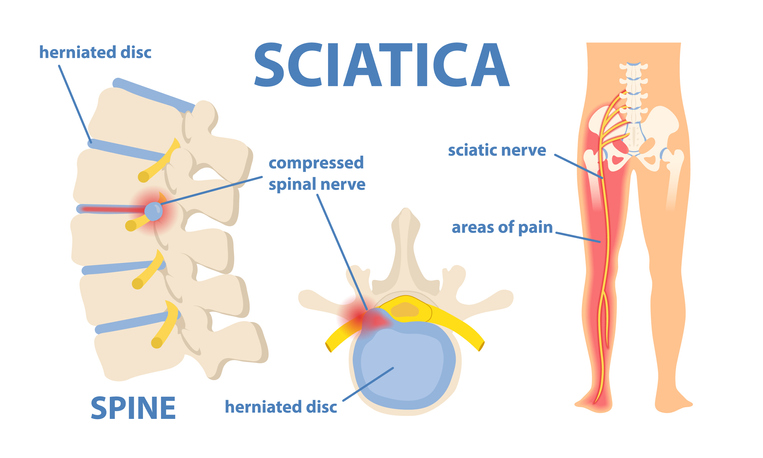Pain
Conventional Treatments for Sciatica

93 people found this helpful
Print
Share
Save
What is sciatica?
Sciatica, or sciatic nerve pain, refers to pain that occurs when the sciatic nerve root in the lower back becomes compressed, irritated or inflamed. Sciatic nerve pain radiates from the lower back, into the buttocks, and down the legs. It is most commonly the result of a herniated or slipped disc, bone spurs, or spinal stenosis.
Conventional treatments for Sciatica
Diagnosing the underlying cause of sciatica is essential in managing pain and implementing an appropriate treatment plan. Conventional treatment plans for sciatica include medications, physical therapy, steroid injections, and surgery.
- Medication
Over-the-counter medications, such as NSAIDs, acetaminophen, aspirin or naproxen, can reduce pain and inflammation. A physician may also prescribe medications to ease sciatica pain. Muscle relaxers can reduce muscle spasms, while oral steroids can reduce inflammation. Tricyclic antidepressants and anticonvulsant medications offer pain relief. If pain is severe, an opioid may be prescribed. Caution should be used if mixing over-the-counter and prescription medications. - Physical therapy
A physical therapist can provide stretches and exercises to decrease sciatica pain and reduce pressure on the sciatic nerve. As the back, abdomen and leg muscles become strengthened, future sciatic problems are less likely to occur. Exercises should be done exactly as directed and are dependent upon the cause of sciatica. - Steroid injections
A corticosteroid injection into the area of the irritated sciatic nerve can reduce pain and inflammation. Typically, pain relief lasts up to three months with a steroid injection. This is performed as an outpatient treatment under local anesthesia. - Surgery
Spinal surgery is a last option for sciatica. It is usually not recommended unless other treatment options are not providing relief, pain is worsening, or muscles in the lower extremities are severely weak. Surgery may also be needed if loss of control of the bladder or bowels occurs or pain is excruciating and unrelenting for an extended time period. Spinal surgery can remove pressure from the affected sciatic nerve. Surgical options include a microdiscectomy, which is minimally invasive and removes offending fragments of a herniated disc or bone spur, or a laminectomy, which removes part of the vertebral bone causing pressure on the sciatic nerve.


















